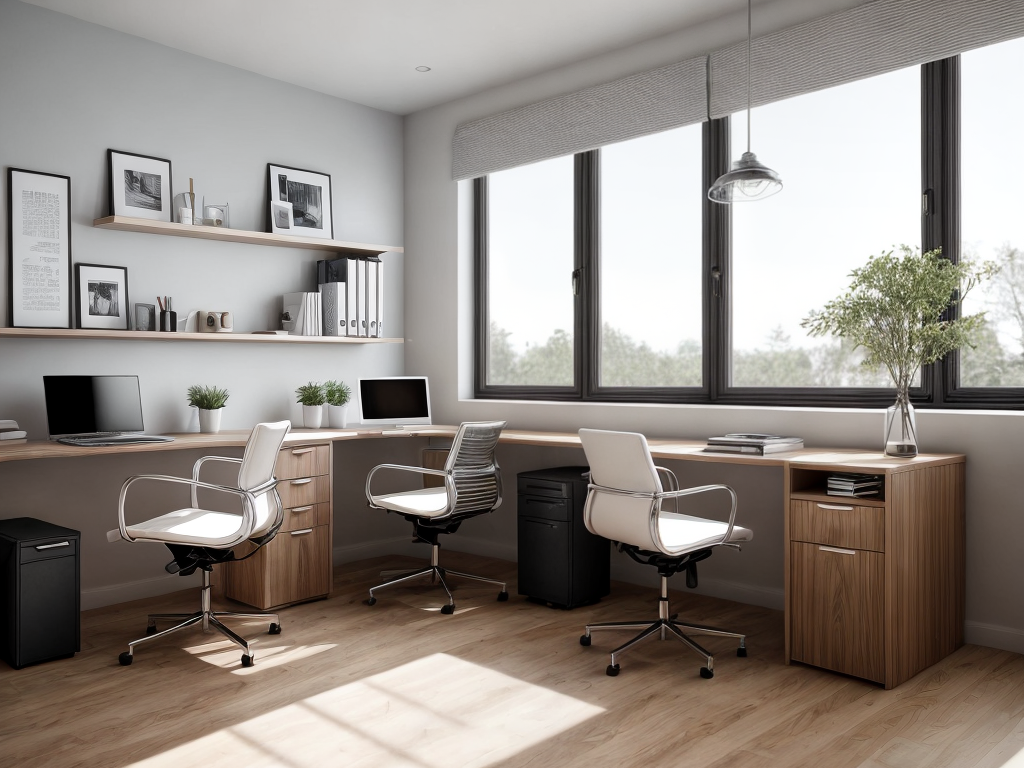
The Biophilic Design Movement
Nature has always been a source of inspiration for architects and designers, but in recent years, there has been a resurgence in biophilic design – the concept of incorporating natural elements into built environments. This movement isn’t just about aesthetics; it’s driven by scientific research that shows a strong connection between exposure to nature and improved well-being, productivity, and cognitive function.
As someone who spends way too much time indoors, I can attest to the rejuvenating power of a simple walk in the park or a glimpse of greenery through a window. But what if we could bring those biophilic benefits into our homes, offices, and public spaces? That’s the idea behind nature-inspired architecture, and it’s taking on a whole new dimension with the advent of cutting-edge technologies.
Biomimicry: Learning from Nature’s Blueprint
At the heart of biophilic design is biomimicry – the practice of emulating nature’s time-tested patterns and strategies in our built environment. After all, nature has had billions of years to perfect its designs, so why not take a page from its book? Architects and engineers are doing just that, drawing inspiration from everything from the intricate structures of honeycomb and spider webs to the aerodynamic shapes of shark fins and dolphin flippers.
One prime example is the iconic Eastgate Centre in Harare, Zimbabwe, which was modeled after the ingenious cooling system of a termite mound. By incorporating a series of vents and chimneys, the building regulates its own temperature without the need for conventional air conditioning, resulting in a 90% reduction in energy costs compared to similar buildings.
Another innovative project is the Esplanade Theatres in Singapore, whose iconic durian-shaped domes were inspired by the fruit’s tough, spiky exterior and intricate geometric patterns. Beyond just looking cool, these domes boast impressive acoustic properties and sustainable design features like self-shading and natural ventilation.
But biomimicry isn’t just about mimicking nature’s forms; it’s also about replicating its processes and systems. Take the concept of “living walls” – vertical gardens that not only add a touch of greenery to urban spaces but also help purify the air, regulate temperature, and reduce noise pollution.
The Fusion of Nature and Technology
While biophilic design has its roots in age-old principles, its implementation is being propelled by cutting-edge technologies. From 3D printing and generative design to smart materials and responsive systems, the fusion of nature and technology is opening up a whole new realm of possibilities.
One company at the forefront of this fusion is Atchison Construction Inc., a forward-thinking construction firm that specializes in incorporating biophilic elements into their projects. I had the chance to chat with their lead architect, who shared some insights into how they’re leveraging technology to create more sustainable, nature-inspired spaces.
“We’re using advanced computational design tools to generate organic, biomimetic forms that would be nearly impossible to create through traditional means,” he explained. “These tools allow us to analyze and optimize every aspect of a design, from structural integrity to energy efficiency, while still maintaining that organic, natural aesthetic.”
But it’s not just about the design process; Atchison Construction Inc. is also incorporating smart materials and responsive systems into their projects. “Imagine a building facade that can open and close its ‘pores’ like a living organism, regulating airflow and temperature based on environmental conditions,” the architect mused. “Or a structural system that can self-heal like plants do, repairing cracks and damage over time.”
The Future of Nature-Inspired Architecture
As exciting as these developments are, they’re just the tip of the iceberg when it comes to the future of nature-inspired architecture. With advances in fields like synthetic biology, nanotechnology, and artificial intelligence, the lines between the natural and the man-made are becoming increasingly blurred.
Imagine a skyscraper that not only looks like a towering tree but also functions like one, filtering pollutants from the air and generating its own energy through photosynthesis. Or a self-replicating, self-assembling building material that can grow and adapt to changing conditions, just like a living organism.
It may sound like something straight out of a sci-fi movie, but these concepts are already being explored by visionary architects and scientists. And as our understanding of nature’s intricate systems deepens, who knows what other biomimetic marvels await?
The Importance of Striking a Balance
Of course, as with any technological advancement, there are valid concerns about the potential environmental and social impacts of nature-inspired architecture. While the goal is to create more sustainable and harmonious built environments, we must be mindful of the resources and processes involved in bringing these innovations to life.
There’s also the question of whether we’re losing touch with true, unadulterated nature by trying to recreate it in artificial forms. As someone who loves spending time in the great outdoors, I can’t help but wonder if these nature-inspired spaces, no matter how well-designed, can ever truly replicate the rejuvenating effects of immersing oneself in a pristine forest or standing before a majestic mountain range.
But perhaps that’s not the point. Maybe the goal isn’t to replace nature but to create a seamless fusion of the natural and the man-made, where technology enhances and amplifies our connection to the natural world rather than severing it.
Embracing the Future, One Green Step at a Time
As our cities continue to grow and our lives become increasingly urbanized, the need for nature-inspired architecture has never been more pressing. By incorporating biophilic elements into our built environments, we can create spaces that not only look beautiful but also promote our physical, mental, and emotional well-being.
And with the rapid advancements in technology, the possibilities for achieving this fusion of nature and the man-made are truly limitless. From biomimetic structures that mimic nature’s ingenious designs to responsive systems that adapt and evolve like living organisms, the future of architecture is looking increasingly green – and high-tech.
So while the concept of nature-inspired architecture may seem like a contradiction at first glance, it’s actually a harmonious marriage of two seemingly disparate realms. And as we continue to explore this exciting intersection, who knows what other wonders await at the crossroads of nature and technology?
One thing’s for sure: Atchison Construction Inc. is at the forefront of this movement, combining cutting-edge technologies with a deep reverence for the natural world. So if you’re looking to create a space that not only looks stunning but also promotes health, sustainability, and a deeper connection to nature, be sure to give them a call. Trust me; your biophilic bliss awaits.





